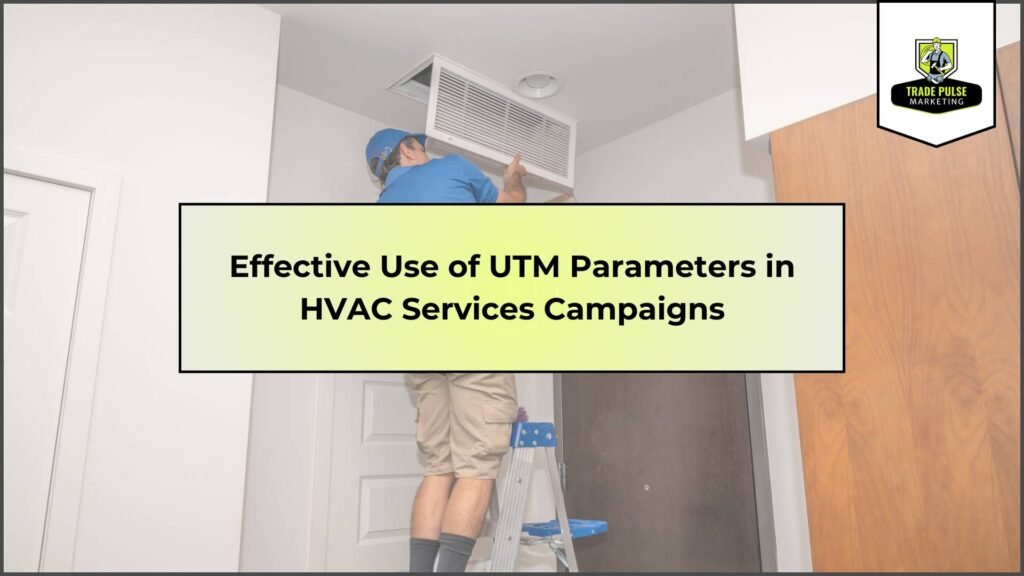Understanding UTM parameters can significantly boost your HVAC marketing efforts. Simply put, UTM parameters are bits of code you add to your website links to track how visitors find your services. By using these tags, you can discover which marketing campaigns are driving traffic to your site, whether it’s through social media posts, email newsletters, or ads.
This insight helps you make informed decisions about where to invest your resources, ensuring your marketing is as effective as possible. For HVAC businesses, knowing what’s working and what’s not means attracting more customers and providing them with the best service possible. Ready to learn how to implement these valuable tools in your campaigns? Let’s dive in!
Importance of Tracking Campaign Performance for HVAC Services
Tracking campaign performance is essential for HVAC services. It helps you understand what works and what doesn’t in your marketing efforts. By analyzing data, you can identify which ads bring in the most customers, allowing you to refine your strategies and allocate resources effectively.
Using UTM parameters enhances this process. They provide clear insights into where your traffic is coming from, enabling you to assess the success of different campaigns. You’ll know if social media, email marketing, or paid ads are driving engagement.
Ultimately, tracking your performance boosts your return on investment and ensures your HVAC services reach the right audience. Plus, it builds trust with potential customers, as you can demonstrate a commitment to quality and accountability in your services. So, keep a close eye on those metrics and make data-driven decisions to enhance your HVAC marketing strategy!
Setting Up UTM Parameters for HVAC Services Marketing Campaigns
Setting up UTM parameters for your HVAC services marketing campaigns is easy and essential for tracking your efforts. Start by adding specific tags to your campaign URLs. Focus on five key components: **source** (where the traffic is coming from, like Facebook or Google), **medium** (the type of traffic, such as email or social media), **campaign name** (the specific promotion or service), **term** (optional, for paid search keywords), and **content** (to differentiate ads or links).
For example, a URL might look like this: `www.yourhvacsite.com?utm_source=facebook&utm_medium=social&utm_campaign=seasonal_offer`. By using UTM parameters, you’ll gain insights on which campaigns drive the most leads and conversions. This data improves your marketing decisions and helps tailor your HVAC services to customer needs effectively. Your understanding of UTM tags enhances your campaigns and leads to better results—ultimately benefiting your business and your customers.
Analyzing UTM Data for Insights into HVAC Services Campaigns
Analyzing UTM data is a powerful way to gain insights into your HVAC marketing campaigns. By utilizing UTM parameters, you can track where your website traffic is coming from, whether it’s social media, email newsletters, or paid ads. This information helps you understand which channels perform best, allowing you to focus your efforts and resources effectively.
When you see changes in conversion rates, you can adjust your strategies accordingly, ensuring you offer potential customers what they need. For instance, if a certain ad brings in more inquiries, you might want to create similar campaigns or refine the content. By honing in on what works, you not only improve engagement but also build trust with your audience. Remember, the more you know about your visitors’ behavior, the better you can cater to their needs and enhance their experience with your HVAC services.
Optimizing Campaigns Based on UTM Performance for HVAC Services
Optimizing your HVAC marketing campaigns using UTM parameters can significantly boost your performance. Start by setting clear goals for each campaign, whether it’s driving website traffic, generating leads, or increasing service bookings. Use UTM tags to track where your visitors come from—like social media, emails, or ads. This data helps you see what works best.
Regularly analyze your UTM performance; look for patterns in successful channels and adjust your strategy accordingly. For example, if social media drives the most traffic, consider increasing your budget there. Ongoing optimization not only maximizes your marketing efforts but builds trust with potential customers, showing that you understand their needs.
By focusing on UTM data, you’ll refine your HVAC services marketing, enhancing your authority in the industry while ensuring you resonate with your audience’s needs. It’s a friendly, effective way to grow your business.
Conclusion on Effective Use of UTM Parameters in HVAC Services Campaigns
In conclusion, using UTM parameters effectively in your HVAC services campaigns can greatly enhance your marketing outcomes. By adding unique identifiers to your URLs, you can track where your website traffic originates, measure campaign performance, and understand customer behavior. This clarity allows you to make informed decisions, optimize your strategies, and better serve your clients’ needs.
Remember, mastering UTM parameters not only helps you refine your marketing efforts but also builds trust with your audience by demonstrating a commitment to transparency and quality service.
If you’re looking for professional assistance in elevating your HVAC marketing strategy, feel free to schedule a free strategy call with Trade Pulse Marketing today! We’re here to help you thrive.

